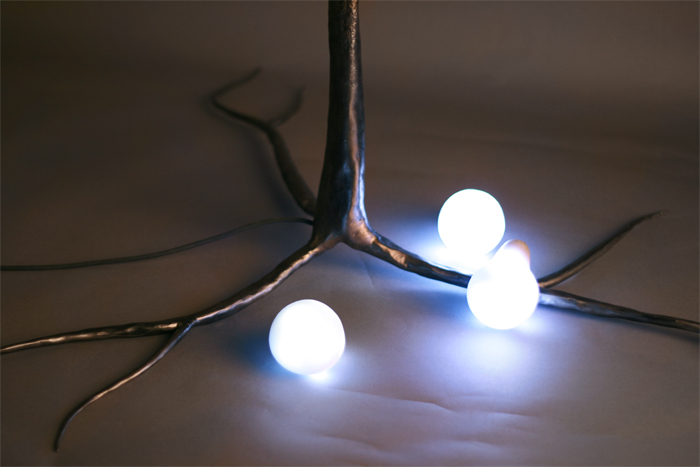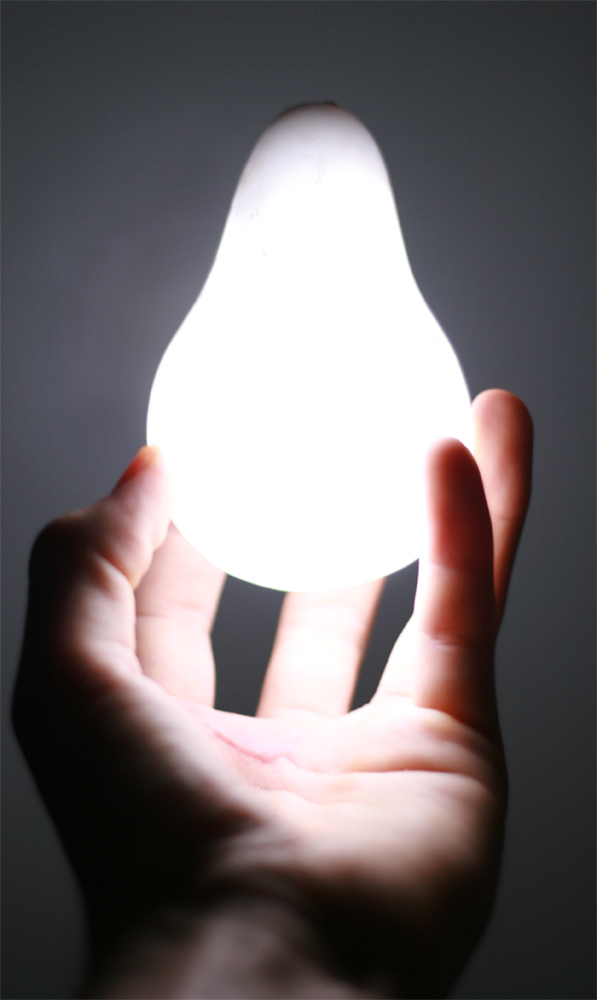
A MATHEMATICIAN once told me that when long, complicated equations work, they give off a resonant, almost aural ping! By CINTRA WILSON

Hiroko Masuike for The New York Times

Hiroko Masuike for The New York Times

Hiroko Masuike for The New York Times
Pythagoras believed that everything in the universe could be translated into such deathless equations, and that the perfectly balanced, mathematic harmony of planetary movements corresponded to a symphony of such pings!
Nowadays it’s hard to be so excited about the physical world.
An all-pervasive corporate chain-store environment has absorbed and conquered the better part of individual retail expression. The guy who stocks the drugstore shelf with Nasonex is as disconnected from the choice of its placement as the one in charge of putting the bottle into its preprinted box, or the scientists responsible for the patent. Apart from fruit at the farmers’ market, there is little celestial music connecting most products to their sources; their indispensable symbolic place in the overall composition of life is not usually apparent.
The new Edit boutique was designed to give the shopper the feeling of being a welcome guest in an adorable two-story town house. When I entered, a lovely young woman rushed over to hang my coat with the easy friendliness of a good party hostess.
The Edit concept was explained with gentle enthusiasm. The owners, Valerie Feigen and Alissa Emerson, assembled their inventory by cherry-picking their favorite items from various designer collections. Their talent for this is immediately apparent. The shop is aglow with these little love affairs of selection, giving everything a slightly magical, soulful quality, as if it were made by elves or baked by your grandmother.
The first floor has an excellently truncated selection of handbags by notables like Anya Hindmarch alongside apparel by venerable designers like Michael Kors and Phillip Lim, mixed in with the work of up-and-comers like Charles Chang-Lima, whose fetching black patent blazer is the first magnetic item you reach out and touch ($1,595).
The centerpiece, set under an enormous chandelier made of bright golf-ball-size crystal spheres, is a series of jewelry cases pushed into an arrangement the size of a large dining table.
I’m not a big jewelry person. I can’t really relate to wearing $30,000 on one arm, but I will be the last to begrudge a lady such baubles, and the first to pull her wrist closer to my eye and say “Ooooh!” But everything in these cases is so surpassingly fine as to be mind-expanding on the subject of jewelry lust.
The assistants are charmingly passionate about it. Like girls allowed to play dress-up in a starlet’s steamer trunk, they breezily grab treasures and drape them casually on you and themselves, sharing the stories about them.
I was stunned by the work of Ray Griffiths, an Australian designer trained in the dying art of designing and repairing crowns for royalty. His bracelets are jaw-dropping: almond-size drops of blue topaz, smoky quartz and peridot, set in gold latticework reminiscent of Fabergé eggs and strung together into big modern flowers. They are simultaneously regal and trippy — something Prince William might buy to court the gilded bohemian Sienna Miller ($11,000 to $14,000).
A layered gold ring covered with tiny diamonds by Basel Jóias unsnaps and unfolds into a bracelet: two exceptional pieces in one ($4,500).
Hidden in all this diverse artistry is Edit’s ecumenical approach to price points. Thrown in alongside the ultraluxe baubles are less expensive items, like $300 lapis lazuli earrings, that look right at home with the costlier stuff.
And the clothes are great, too.
One popular item is a Phillip Lim thick gray knit tunic with stripes of metal pearls the weight of ball bearings. It looks like something Prince Harry would buy for Sienna Miller ($975).
Inspired little extras are discoverable throughout. Waiting inside the dressing room was a pair of black silk Louboutin mules for you to model with your dress, and marvelous flat over-the-knee Beguelin boots, should you prefer a swashbuckling Bardot look ($1,195).
Among neatly folded sweaters was a fist-size purple python Kotur evening bag, latched with tiny purple disco balls. Just sitting there fabulously like a runaway Easter egg. It wanted me to touch it.
It was a decadent. It was $390. Sometimes it’s deliriously nice to hold some little indulgence all filthy with opulence in your hand and rejoice in its electrifying impracticality. It was a hot little thrill, like rummaging though your sock drawer and finding a surprise kiss on the cheek from Jean Harlow.
In spite of all this glorious stuff, I bought basics: a fine-weave cotton pullover to wear every single minute, forever ($160) and black trousers with tailoring too perfect not to buy for $225.
Edit gives back something you didn’t know you missed, but once rediscovered, you wonder how you ever lived without: A retail environment that vibrates with the coherent harmonies of its own, um, intelligent design (for lack of a better term). It’s as much art installation as boutique, in that it provides a little vacation in someone else’s well-lighted consciousness. A golden thread connects every choice in Edit, from the paint on the walls to the cashmere opera gloves, joining everything together with the balanced tension, delicacy and natural genius of a spider web.
Such ecstatic pings! are all too rare in life ... .
Edit
1368 Lexington Avenue (near 91st Street);
(212) 876-1368.
THESIS A bad-taste-free zone, with a coffee area, a backyard garden and a personal shopping service, should you wish the crème de la crème-iest presented to you while you lounge.
ANTITHESIS No drawbacks, really, unless you have an aversion to the phonics of the Upper East Side (e.g., “It’s so soft!” pronounced “It’s sow sooh-uft!”). Generously egalitarian selections provide a little something swellegant for Eliza Doolittle, the Fair Lady she becomes and most gals in between.
SYNTHESIS Work done by someone who loves it is superior to similar work by someone who doesn’t.
via
New York Times









 Personal Transport Concept - Toyota's i-Real (VIDEO)
Personal Transport Concept - Toyota's i-Real (VIDEO) Luxury Underwater Hotel in Dubai - Hydropolis to Open This Month (GALLERY)
Luxury Underwater Hotel in Dubai - Hydropolis to Open This Month (GALLERY) Breathtaking Bedrooms - Interior Design to Stimulate the Senses (GALLERY)
Breathtaking Bedrooms - Interior Design to Stimulate the Senses (GALLERY) Bath/Shower/Sink & Shower/Sink Combo - Ebb Concept
Bath/Shower/Sink & Shower/Sink Combo - Ebb Concept























 Living in a Billboard - Aeroform Homes
Living in a Billboard - Aeroform Homes The winner of Electrolux's Design Lab 2007 competition will be announced tomorrow in Paris, and these are the final eight products hoping to win their creator 5,000€ ($7,435). The brief was to design something eco-friendly and sustainable for 2020, and sexiest is the Fog Shower by Joo Diego Schlmansky from Brazil, which consumes just two liters of water during a five-minute shower. It's all to do with the mist of microscopic water droplets, rather than a traditional shower, which uses around 20 liters for the same amount of scrub-up time.
The winner of Electrolux's Design Lab 2007 competition will be announced tomorrow in Paris, and these are the final eight products hoping to win their creator 5,000€ ($7,435). The brief was to design something eco-friendly and sustainable for 2020, and sexiest is the Fog Shower by Joo Diego Schlmansky from Brazil, which consumes just two liters of water during a five-minute shower. It's all to do with the mist of microscopic water droplets, rather than a traditional shower, which uses around 20 liters for the same amount of scrub-up time.

 South Korea's Jump Up Internet Rescue School is the first of its kind, providing rehabilitation to those who cannot escape from the confines of the great interweb. Fittingly, South Korea is the world's foremost internet connected nation, with over 90% of homes having access to cheap, high speed broadband. Worryingly, this has been the reason for the establishment of a rehabilitation center for those who are addicted; the ready availability of the internet means users have grown seriously dependent on the World Wide Web's offerings.
South Korea's Jump Up Internet Rescue School is the first of its kind, providing rehabilitation to those who cannot escape from the confines of the great interweb. Fittingly, South Korea is the world's foremost internet connected nation, with over 90% of homes having access to cheap, high speed broadband. Worryingly, this has been the reason for the establishment of a rehabilitation center for those who are addicted; the ready availability of the internet means users have grown seriously dependent on the World Wide Web's offerings.









